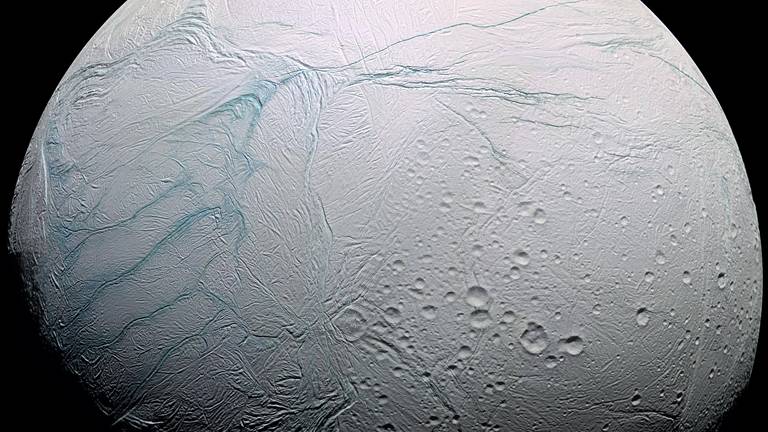
Enceladus is one of the smallest of Saturn's moons that is spherical in shape with a diameter of 500 kilometers (only one-seventh the diameter of Earth's moon). The ocean beneath the icy crust that completely covers it, turns out to be an ideal place to sustain life.
According to a research by the University of Washington which was presented in June at the Astrobiology Science Conference (AbSciCon 2019), the relatively warm waters under the icy shell would contain carbon dioxide, methane, and hydrogen in concentrations higher than those it was previously thought.
The researchers also hypothesize that the pH (the measure of the acidity of an aqueous solution) of those waters may be more similar than was thought to that of the oceans on Earth, and this makes them seem even more suited to life. Lucas Fifer, one of the researchers, says the mix is "a free meal" for some types of microorganisms."
Near the south pole of Enceladus, the surface is marked by long and deep fractures from which powerful geysers rise for hundreds of kilometers: the analysis of the data relative to the fountains has revealed the presence of large complex molecules. Reverse-Engineering On its journey through the Saturn system, NASA's Cassini spacecraft had shown plumes of vapors (water and other volatile elements) leaking from the surface of Enceladus, in the south pole region, fired into space for miles.
Surprisingly, the analysis of the available data for those geysers revealed great differences compared to the hypotheses on the composition of the underlying ocean. The reason (as claimed by the researchers) is that the outburst into Space will cause intense alteration of the chemical structure of the material that is fired from the erupted jet.
To reconstruct the effects of the fractionation, Washington University researchers have tried to reverse-engineer it using computer-simulations of the data collected by Cassini.
The result highlighted the presence of hydrogen, methane and carbon dioxide in high quantities, previously underestimated. This finding reinforces the idea that the microworld ocean of Enceladus, protected by a thick shield of ice, is a favorable environment for life.









